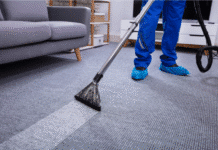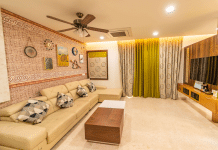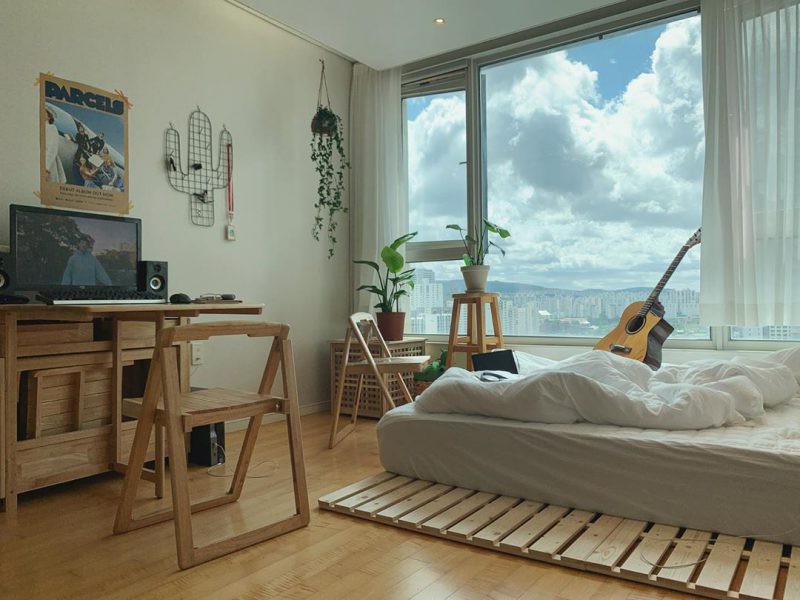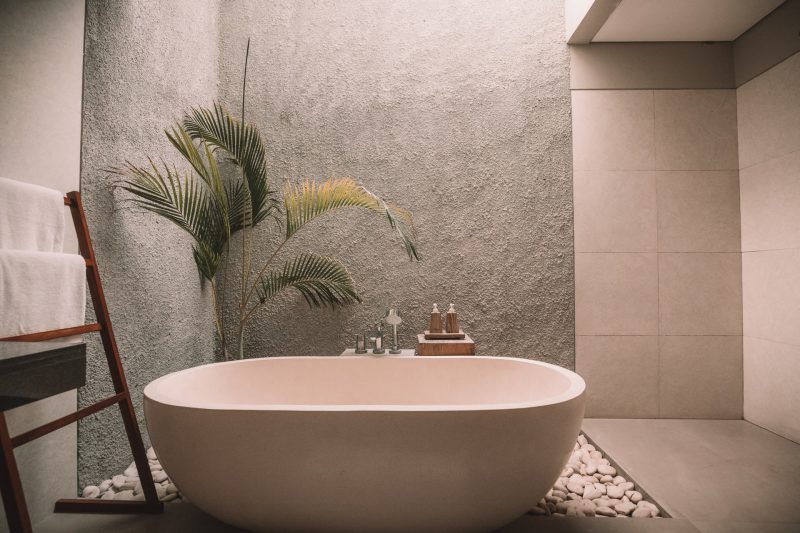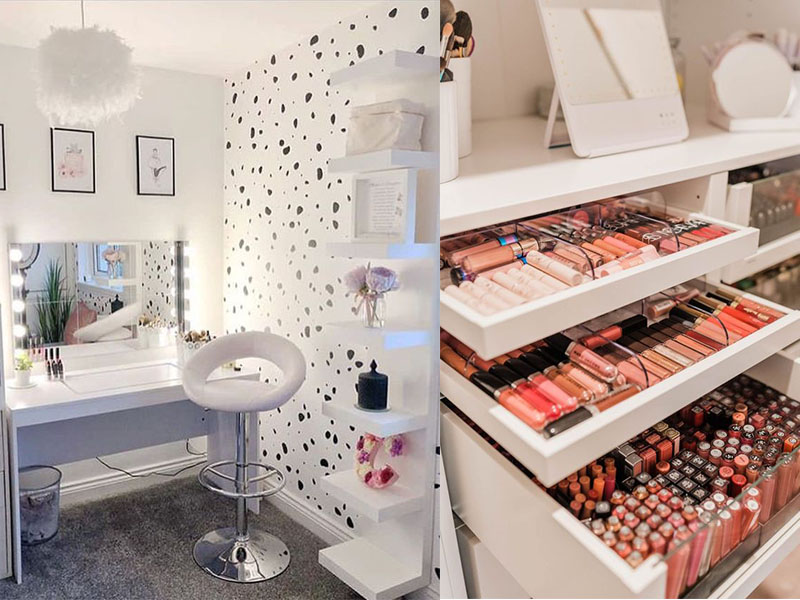You might prefer the shiny look of leather or the simplicity of synthetic washing fibers. Your lifestyle and how you use your space will determine the best material for your sofa. For example, velvet and chenille are stylish upholstery textiles if you live alone and want a little luxury. Instead, consider durable materials for sofa upholstery, such as microfiber or polyester, if your home has a lot of youngsters and pets.
There are so many fabrics and materials to pick from in stores and online that it may quickly become overwhelming. Don’t be concerned. We’ve laid out the most popular sofa material selections and broken down the benefits and drawbacks of each to help you figure out what you should seek.
Leather
Leather is a popular upholstery choice for couches since it is not only attractive but also long-lasting. Remember that leather comes in several grades, with genuine leather being the most excellent quality and costing the most. A classic leather sofa is a terrific investment piece if your budget allows it.
Advantages:
- It’s simple to clean. Leather is stain and spill-resistant; you can easily wipe liquids away with a cloth, so no unpleasant odors or moist residues can occur with fabrics.
- Extremely long-lasting. Leather is the way to go if you have dogs or need a sofa that can withstand severe use and take a hammering.
- Bold and classic. Leather has a timeless aesthetic in addition to being a strong material. A caramel or brown leather sofa is a classic statement piece that will never go out of style.
Disadvantages:
- The drawbacks include a coarse texture. When opposed to materials, leather has a smooth but firm feel. As a result, leather isn’t for you if you’re searching for a plush sofa to sink into.
- Splits and streaks. Leather, primarily if it is heavily used, can develop breaks and cracks over time. In addition, keep an eye out for fading in direct sunshine.
- It’s pricey. The cost of leather furniture is high. If you encounter a low-cost leather sofa, it’s probably poor quality and not built to last.
Microfiber
For pet owners, this sofa fabric is a great option. Microfiber is a fine polyester that is soft, durable, and easy to clean in sofa materials. In addition, pet hair, dust, and lint won’t stick or stay stuck in the synthetic fibers because of the tight weave, making upkeep a breeze.
Advantages:
- Excellent resistance. Microfiber resists fading. It lasts longer than most fabrics and is easy to spot-clean and wipe away stains thanks to the tight weave.
- Eco-friendly and long-lasting. One of the most durable manufactured materials is synthetic microfiber. But the fact that it is petroleum-based means it is easily recycled.
- Comfort gets an A+. Microfiber sofas are warmer than leather and polyester, making them more comfortable to sit on. It’s also allergy-friendly.
Disadvantages:
- Keep an eye out for watermarks. While microfiber resists most stains, if water, particularly unclean water, enters the fabric, the staining may show up as it dries.
- Challenges in folding Due to the material’s suppleness, it folds easily on the extreme ends when exposed to high heat, which can be unsightly.
Linen
When it comes to upholstery materials, linen has a reputation for being divisive. On the one hand, linen provides a breezy cooling effect and a relaxed texture that softens with use. But, on the other hand, it’s a fragile fabric that readily stains and wrinkles, and if not carefully cleaned, it can shrink.
Advantages:
- Strong and light. One of the most lasting upholstery textiles is delicate-looking linen. It resists mildew and abrasion, strengthens when wet, and never pills or fades.
- For less, go green. Linen is one of the few natural materials that are economical and stylish, allowing you to be environmentally conscious while still enjoying a modern and comfortable sofa.
- Soft and lovely. Linen has a slubby texture that gives it a smooth and appealing appearance. It’s soft to the touch, making it quite dreamy and cozy.
Disadvantages:
- All of the creases Linen is prone to creases. There’s no getting around it.
- Not for every day. A linen sofa is not designed to be roughly used. It’s prone to soiling and should be cleaned by a professional whenever this happens.
Cotton
The weave count of cotton upholstery determines its durability. A couch fabric with a tighter weave is more robust and of higher quality. Cotton, on the other hand, is a natural material that resists fading well. However, it is more susceptible to soiling and wrinkling.
Advantages:
- Strength and style. Cotton is also one of the most long-lasting sofa textiles. It can also be dyed in practically any color, so the possibilities for decor combinations are unlimited.
- It’s completely natural. Cotton is a natural fiber that is soft, pleasant, and breathable. It’s also hypoallergenic, which makes it ideal for people with sensitive skin.
- It gives me a good feeling. In addition, cotton resists pilling and abrasion, allowing you to relax for hours.
Disadvantages:
- Consider the color of the dye. While dyeing is simple, it isn’t always a good thing. For example, cotton is so good at catching shade that it can sometimes pick up the color of your blue jeans.
- Make sure it doesn’t become wet. Cotton materials, for example, are porous because they are breathable. This means they can quickly absorb spills, causing wrinkles and possibly odors.
- Wefts that aren’t very strong. Beautiful weaves, such as canvas and damask, are common in cotton upholstery. Still, they wear out faster and are more difficult to clean.
Polyester
It is one of the most widely used synthetic materials for sofa upholstery. Why? It’s a budget-friendly solution that’s wrinkle-resistant, long-lasting, and simple to clean. As a result, polyester sofas can be exquisite, despite the material not sounding unique or spectacular.
Advantages:
- Strong and quick to dry. Polyester is stain and abrasion-resistant, making it a long-lasting fabric. And the material dries rapidly after being washed for cleaning.
- There are no odors. Polyester is marginally porous; therefore, it won’t absorb odors as effectively as other breathable textiles like cotton and linen.
Disadvantages:
- Make sure the temperature is correct. Because polyester upholstery can fracture when exposed to extreme or variable temperatures, keep your polyester sofa in an area with a consistent temperature.
- It’s delicate. Polyester is a tensile fabric, meaning it will stretch with use. Unfortunately, it’s also combustible, so don’t light candles near it because it could be dangerous.
Velvet
If you want a sofa that looks and feels luxurious, velvet is the upholstery fabric to choose. The material has a lustrous sheen that catches the light and reflects it over your sofa’s shape. This emphasizes the form of the couch, making it appear to be an authentic statement piece.
Advantages:
- Luxurious warmth. Velvet is not only delightfully soft, but it also provides excellent insulation. As a result, it’s ideal for cold environments and gets cozier the longer you sit in it.
- Colorful luster. Velvet may be dyed in a variety of vibrant hues. However, the fabric’s reflected sheen looks extremely dramatic and fascinating when dyed in jewel tones.
- Good with pets. Velvet has a flat pile comparable to a rug, making it highly durable, and any dirt or pet hair will fall away. In addition, unlike other fabrics, velvet has no elevated weaves or loose threads so that it won’t get snagged by claws.
Disadvantages:
- Highest level of maintenance. Velvet’s durability is determined by the density of the woven fiber heaps. Velvets, on the other hand, are notoriously difficult to clean and preserve.
- It’s an expensive fabric.


